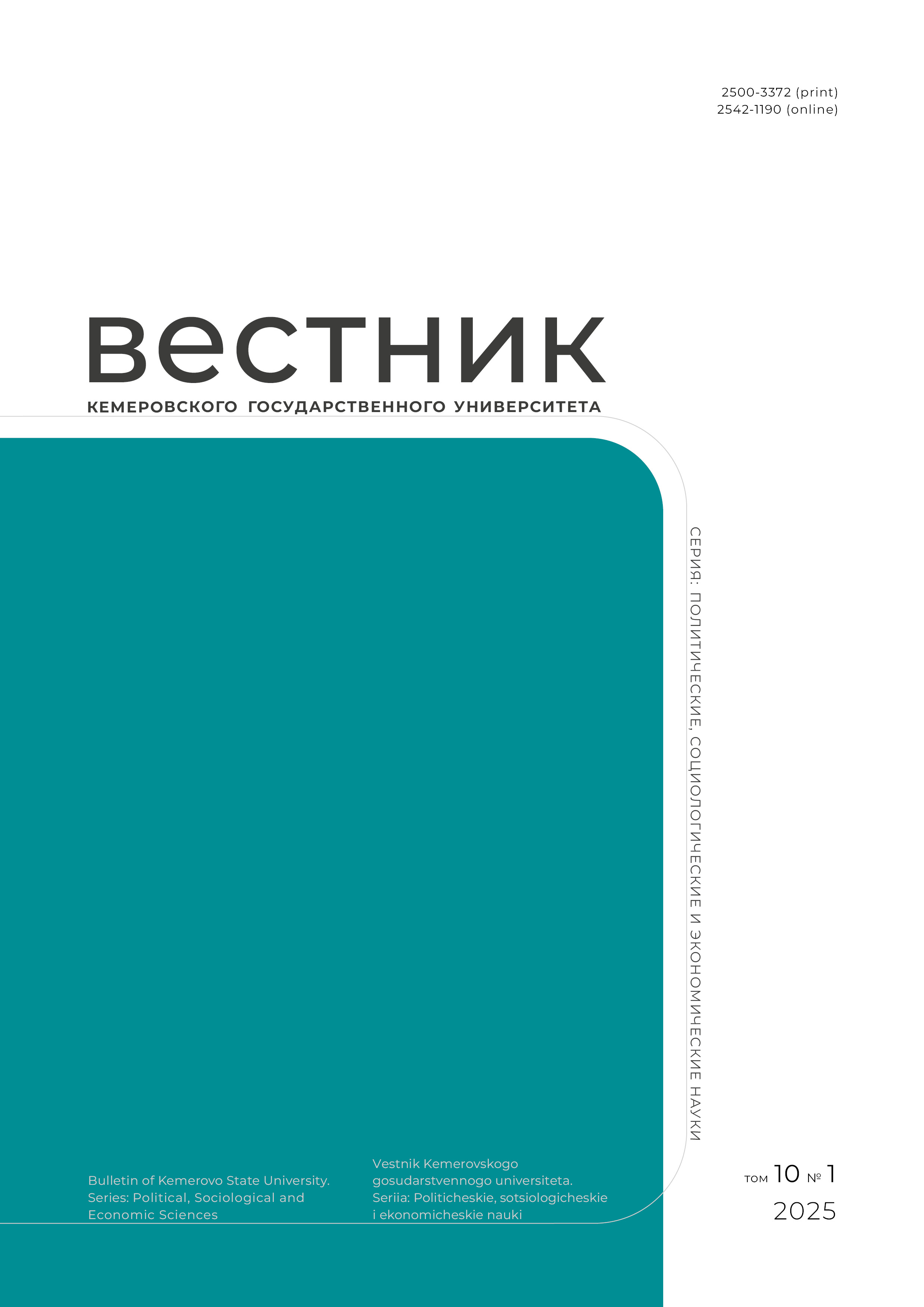Kemerovo, Russian Federation
UDC 32
The present research featured the way social net users perceive the image of the head of a region. The study involved comments to posts made by the governor of Kuzbass S. E. Tsivilev in VKontakte, Instagram, and Facebook. The analysis employed the method of narrative semiotics. The feedback between the population and the government appeared to depend on the specifics of the political regime in the region. Social nets became both a form of feedback and an indicator of the perception of the imposed image. Different social networks have different audiences, hence the different perception of the governor. Moreover, each social net has its own functionality, which sets the format of feedback. The initial hypothesis was that different social networks produce different attitudes towards the main figure of local executive power. The research results contradicted with this hypothesis and revealed a difference in the positioning of the executive branch and modeling of the governor’s image perception. Based on the data about different perception models, the local authorities can build new media strategies in order to improve the image of the governor in the eyes of the population.
politics, region, school-transformation, image of power, media policy
1. Bondarenko Yu. A. Authoritarian tendencies in Russian democracy as a historical tradition. Vestnik KGPU im. V. P. Astafeva, 2009, (2): 44-47. (In Russ.)
2. Melville A. Yu., Stukal D. K., Mironyuk M. G. "King of the hill", or Why the institutions of post-communist autocracies are bad. Polis. Political Studies, 2013, (2): 125-142. (In Russ.)
3. Merkel V., Croissant A. Formal and informal institutions in defective democracies. Polis. Political Studies, 2002, (1): 6-17. (In Russ.)
4. Golosov G. V. Electoral authoritarianism in Russia. Pro et Contra, 2008, 12(1): 22-35. (In Russ.)
5. Tarasova Yu. A. Technologies of public relations in formation of image of public service. Administrative consulting, 2015, (5): 29-37. (In Russ.)
6. Fedorova S. A. Actant-rhizome ontology of B. Latour. Vestnik Tomskogo gosudarstvennogo universiteta. Filosofiya. Sotsiologiya. Politologiya, 2017, (37): 249-261. (In Russ.) DOI:https://doi.org/10.17223/1998863X/37/25
7. Proskurin S. G. The typology of network structures in language and culture. Vestnik NSU. Series: Linguistics and Intercultural Communication, 2010, 8(2): 58-64. (In Russ.)
8. Atyashkin I. A. PR as the mechanism for the formation of public opinion about activity of bodies of state power. Elektronnyi nauchnyi zhurnal "Nauka. Obshchestvo. Gosudarstvo", 2017, 5(4): 172-178. (In Russ.)
9. Vatoropin A. S., Semina M. S. Monitoring the governor's image development as a leader of public opinion. Voprosy upravleniia, 2016, (1): 24-27. (In Russ.)
10. Khaliullina M. S. The blog as a means of communication of regional politicians with the electorate. Voprosy teorii i praktiki zhurnalistiki, 2017, 6(4): 603-614. (In Russ.) DOI:https://doi.org/10.17150/2308-6203.2017.6(4).603-614
11. Fatykhova D. R. The role of social media in shaping of an image of a politician. Vestnik ekonomiki, prava i sotsiologii, 2014, (4): 263-265. (In Russ.)
12. Evstigneeva N. V., Oberemko O. A. Narrative analysis models. Chelovek. Soobshhestvo. Upravlenie, 2007, (4): 95-107. (In Russ.)
13. Efimova I. N., Makoveychuk A. V. Social networks as a new mechanism for forming the image of the subjects of political activity. Izvestiia AltGU, 2012, (4-1): 245-248. (In Russ.)
14. Kerimov A. A., Poptsov D. A. Image of a political leader in the era of digital media technologies: features of formation. Izvestiia Saratovskogo universiteta. Novaia seriia. Seriia: Sotsiologiia. Politologiia, 2020, 20(3): 366-370. (In Russ.) DOI:https://doi.org/10.18500/1818-9601-2020-20-3-366-370
15. Makoveychuk A. V. The prospects for digitalization the political sphere at the regional level in contemporary Russia. Gumanitarnye Nauki. Vestnik Finasovogo Universiteta, 2018, 8(4): 10-15. (In Russ.) DOI:https://doi.org/10.26794/2226-7867-2018-8-4-10-15
16. Rykhtik M. I., Makoveychuk A. V. The role of social media in implementation of image strategies of the politicians in the context of information society development at regional level. Voprosy upravleniia, 2015, (6): 76-82. (In Russ.)
17. Popova A. A. Social networks as a tool of political image formation. PRO NUNC. Sovremennye politicheskie protsessy, 2018, (2): 82-87. (In Russ.)
18. Titscher S., Meyer M., Vodak R., Vetter E. Methods of text and discourse analysis, tr. and ed. Kiseleva A. A. Kharkiv: Gumanitarnyi Tsentr, 2016, 356. (In Russ.)

















